Before we talk about anything else, let’s address the elephant in the room.
The last official public PageRank update happened in December 2013. In October 2014, Google’s John Mueller confirmed what we’d long suspected – that Google Toolbar PageRank was officially dead. The final nail in the coffin came two years later when Google removed Toolbar PageRank from its browser.
So, understandably, a lot of people roll their eyes when they see “news” about PageRank in 2019. And a lot of people are content to let PageRank remain a relic of the past.

But even though Toolbar PageRank is gone, Google’s Gary Illyes confirmed in 2017 that PageRank* is still a ranking signal (albeit one of hundreds that Google uses).
*(To avoid confusion, I’ll be using the term “Toolbar PR” to refer to the now non-existent public version and “PageRank” to refer to Google’s behind-the-scenes metric.)
We also have other evidence that Google is still using and updating PageRank behind the scenes: In April 2018, they updated their PageRank patent and filed for a continuation.
Of course, just because Google has a patent, it doesn’t mean they use it. But there’s enough evidence here to suggest PageRank still exists and it’s still a metric that matters, even if the general public can no longer view their 1 through 10 Toolbar PR score. PageRank is far from the only metric that matters, but that doesn’t mean we should ignore it entirely or pretend it doesn’t impact rankings.
Which brings us to the topic at hand: If we know PageRank is still a ranking signal but we don’t know what changes Google is making to their algorithm or how impactful PageRank is in 2019, what can we do about it?
This is where SEOs generally fall into one of two camps.
- You ignore it and focus exclusively on the metrics you can accurately measure that you know will improve your website (in which case, this article won’t be of much use to you).
- You use a new metric that strongly correlates with PageRank that will help you make educated guesses and optimize for the ranking signal we know still exists (in which case, read on!).
There’s no one-to-one substitution for Toolbar PR available and no foolproof way to calculate PageRank. I’m not going to peddle snake oil and tell you such a thing exists.
Instead, this article will give you a (very brief) rundown of PageRank’s history, explain how it is (or was) calculated, and then talk about a recent study that shows the correlation between these alternate solutions and rankings. We’ll end with some basic tips that should help you improve your PageRank (in theory, at least).
Let’s jump into a (short and sweet) history of PageRank.
What is PageRank?
If you had even a passing familiarity with SEO over the past few years, you’ll probably recognize Toolbar PR. Toolbar PR took the more complicated behind-the-scenes PageRank metric and condensed it down into a zero to 10 score that was easy to understand: the higher your number, the better your page.

What is PageRank? The TL;DR version is that it’s a way for Google to rank web pages according to importance as determined by the number and quality of a page’s inlinks.
So, let’s pretend your page has a PageRank of 10/10 and includes links to five other pages. According to Google’s original formula, 85% of your page’s PageRank would be divvied up between each of the pages you linked out to. 8.5/5 = 1.7. So each page would receive a PageRank of 1.7/10 from your page.
(This is a very simplified look at how PageRank was calculated. If you’re interested in the math, I recommend brushing up on How PageRank Really Works by Dixon Jones. It’s a fascinating read.)
Suffice to say that when SEOs talk about the “quality of a link” or “link authority” or “link juice” or use phrases like “not all links are created equal,” this is part of what we’re talking about.
Of course, Google’s changed a lot about how they rank pages over the years. It would be foolish to assume that PageRank hasn’t undergone a similar evolution. Nevertheless, it’s a safe bet that the fundamental concept and underlying goals of PageRank have remained fairly constant over the years.

Why Toolbar PR died
In theory, PageRank sounds like a good way to find out which pages users are looking for and ensure that users are shown the best and safest pages that fit their search criteria. And evidently, Google is still using PageRank in some capacity in their ranking algorithm.
But, as I’ve already mentioned, by late 2013 the public-facing tool was practically pushing up daisies. So what went wrong? The short answer is: SEO went too far.
With the advent of Toolbar PR, PageRank was adopted as the ranking signal to optimize for. What came next was a wave of link farms and link spam. Unscrupulous SEOs tried to game the system and artificially bolster their PageRank score. Buying “high PR” links became its own industry and agencies began selling the service to companies around the world.
In response, Google cracked down on black-hat SEO practices and began deprecating PageRank. They also became tighter lipped about their ranking process. It wasn’t long before Google removed PageRank data from Webmaster Tools (now Google Search Console).
Google explained why many times:
“We’ve been telling people for a long time that they shouldn’t focus on PageRank so much; many site owners seem to think it’s the most important metric for them to track, which is simply not true. We removed it because we felt it was silly to tell people not to think about it, but then to show them the data, implying that they should look at it. :-),” said Google’s Susan Moskwa.
In 2016, Toolbar PR was officially gone.
So, why are we talking about PageRank today if it’s been out of sight and mind for the past three years? Because, in the absence of Toolbar PR, SEOs have devised many strength-of-domain link-based metrics we can use to approximate PageRank.*
*(Again, to be clear, none of these are exact replicas of PageRank, nor do they tap into what Google is doing behind the scenes. But, as thousands of people have discovered, they’re still useful metrics when you’re performing SEO and looking for areas to improve.)
Today, we have access to more third-party replacement metrics than ever before, and more are appearing all the time. This begs the question: Which is the best metric to use in a majority of SEO cases (i.e., what’s the new “gold standard?”)
To find out, it’s become standard practice to measure these metrics against tangible SEO results – SERP positions in particular. This way, we can see which metric more closely corresponds to real-world results.
Domain InLink Rank Correlation results
We want Domain InLink Rank to reflect the ranking power of pages as accurately as possible so SEOs gain a better understanding of the quality of their domains and pages. To test the validity of our metric, we regularly conduct Domain InLink Rank Correlation Studies.
Our most recent study took place between March 4-6, 2019. During that time, we compiled a list of 1,000,000 URLs taken from the top 30 positions in Google SERPs for 33,500 queries. We then calculated Domain InLink Rank for each SERP.
We found that the correlation between InLink Rank and SERP ranking was extremely high: 0.128482487. I won’t go into the full details here but you can check out the study if you’re interested in our specific methodology.
Suffice to say that the metric correlates strongly enough with actual Google rankings.
How to improve PageRank
Even though we can’t see our PageRank score or measure it directly, there are a few best-practice steps you can take to preserve and increase your PageRank:
- Build quality backlinks. Regularly run backlink analysis (probably using one of the tools mentioned above) and make sure the link juice flowing into your site is from high-PageRank pages. As a side note, there’s a common belief among some SEO professionals that some links may not pass PageRank at all – and some may even pass negative PageRank (something close to Spam Rank). The best thing you can do to avoid these problems is just to keep your link profile clean.
- Maintain a shallow site structure. You should keep your most important pages as close to your high-PageRank pages as possible. On most websites, this will be your homepage but that may not be the case for sites with internal landing pages that are higher quality and have more external links compared to homepages.
- Follow best-practices for links coming out of a page. Carefully consider where links live on a page; links appearing in your content are more valuable than navigational links. And keep the number of links pointing out of each of your pages to other internal and external pages down to a reasonable number.
- Tell users where links lead. Using proper anchor text will both help users navigate your content and help your SEO. Just keep it contextual and avoid keyword stuffing. When done organically, placement of relevant keywords in the anchor text tells search engines about your page’s content.
- Leverage linkless mentions. As semantic search gets smarter, linkless mentions will probably grow in importance. I’m not saying they’re a ranking signal yet but we have received hints that Google has started considering online brand mentions in its search algorithm.
Sources
















